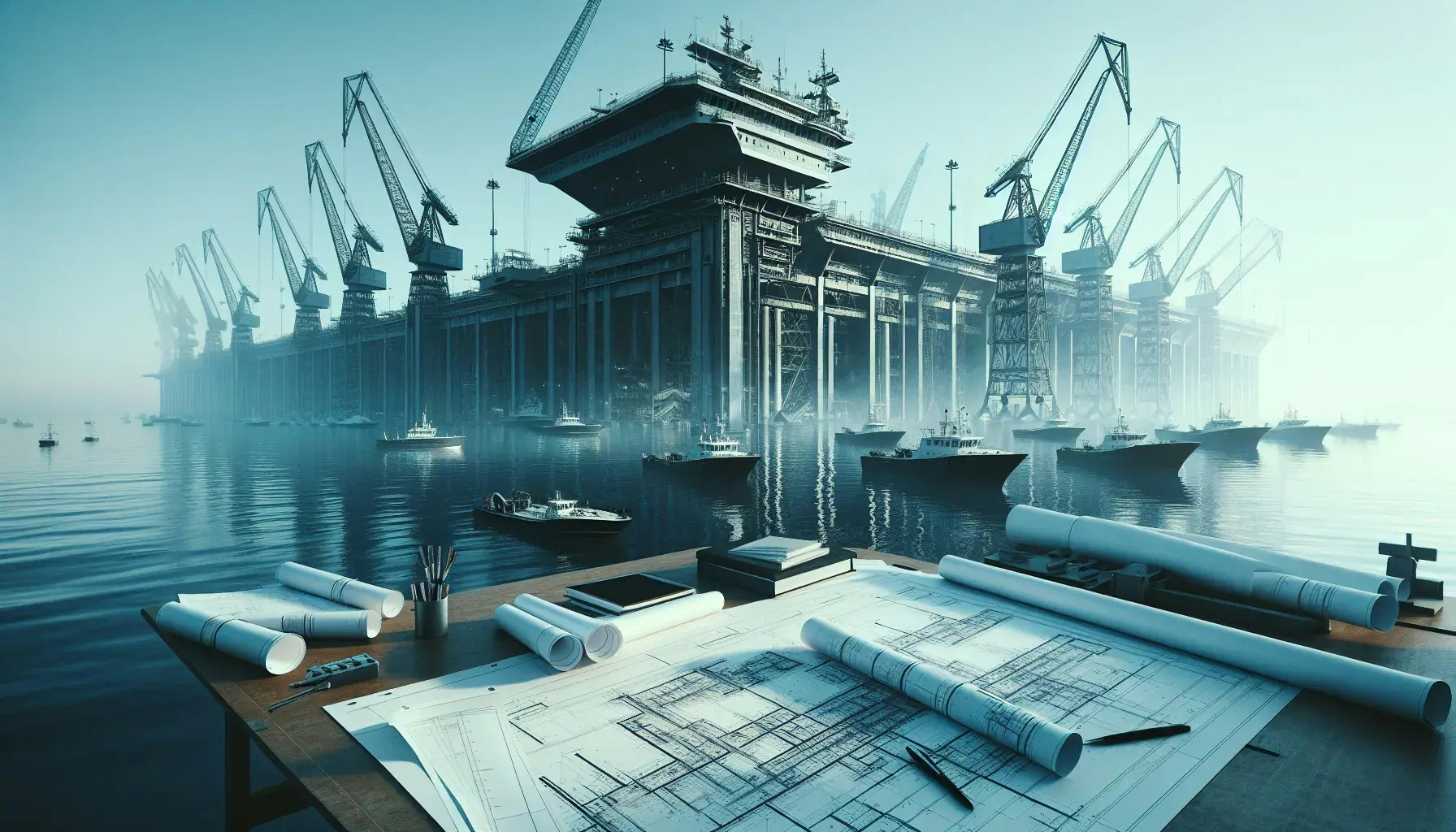Welcome to our deep-dive into the future of the shipbuilding industry. This comprehensive analysis will explore the current state of the industry, the challenges it faces, and the opportunities that lie ahead. We will also delve into the technological advancements shaping the industry and the impact of environmental regulations on its future. Let's embark on this journey to understand the shipbuilding industry's outlook.
"Current State of the Shipbuilding Industry"
The shipbuilding industry stands as a significant player in the global economy. It contributes to international trade, employment, and technological advancements. The industry has seen steady growth over the past decade, with Asia leading the pack. South Korea, China, and Japan dominate the market, accounting for over 90% of all shipbuilding activities.
Despite this growth, the industry faces several challenges. The cyclical nature of the shipping market, coupled with economic uncertainties, has led to fluctuations in demand. The industry also grapples with overcapacity issues, particularly in Asia, leading to intense competition and price pressures.
However, the shipbuilding industry is not all about challenges. It also presents numerous opportunities. The increasing demand for eco-friendly ships and the rise of digital technologies offer potential growth avenues for shipbuilders. The next sections will delve deeper into these aspects.
"Challenges Facing the Shipbuilding Industry"
The shipbuilding industry is navigating through a sea of challenges. The cyclical nature of the shipping market, characterized by periods of boom and bust, poses a significant challenge. Economic uncertainties, such as the recent trade wars and the COVID-19 pandemic, have further exacerbated this issue, leading to unpredictable demand patterns.
Overcapacity is another pressing issue. The rapid expansion of shipbuilding capacities, particularly in Asia, has outpaced demand. This overcapacity has intensified competition among shipbuilders, leading to price wars and thinning profit margins.
Environmental regulations also pose a challenge. The International Maritime Organization (IMO) has set stringent emission standards to combat climate change. These regulations require shipbuilders to design and construct eco-friendly ships, which can be a costly endeavor.
Despite these challenges, the shipbuilding industry is resilient. It continues to adapt and innovate to stay afloat. The following sections will explore the opportunities and trends shaping the industry's future.
"Opportunities in the Shipbuilding Industry"
Amid the challenges, the shipbuilding industry also presents a sea of opportunities. The growing demand for eco-friendly ships is one such opportunity. The stringent emission standards set by the IMO are driving the demand for green ships. These ships use alternative fuels, such as LNG and hydrogen, and incorporate energy-efficient designs.
Digital technologies also offer growth opportunities. The rise of Industry 4.0 technologies, such as IoT, AI, and robotics, is revolutionizing shipbuilding processes. These technologies enable shipbuilders to enhance efficiency, reduce costs, and improve product quality.
The increasing demand for cruise ships and naval vessels also presents an opportunity. The growing popularity of cruise tourism and the need for maritime security are driving this demand. Shipbuilders who can cater to these niche markets can carve out a competitive edge.
"Technological Advancements in the Shipbuilding Industry"
Technology is reshaping the shipbuilding industry. Industry 4.0 technologies, such as IoT, AI, robotics, and 3D printing, are revolutionizing shipbuilding processes. These technologies enable shipbuilders to enhance efficiency, reduce costs, and improve product quality.
For instance, IoT enables shipbuilders to monitor and control shipbuilding processes in real-time. AI and robotics automate complex tasks, reducing human error and enhancing productivity. 3D printing allows for the rapid prototyping of ship parts, reducing lead times and waste.
Digital technologies are also transforming ship designs. Digital twin technology, for instance, allows shipbuilders to create virtual replicas of ships. This enables them to test and optimize designs before construction, reducing costs and improving ship performance.
"Impact of Environmental Regulations on the Shipbuilding Industry"
Environmental regulations are shaping the future of the shipbuilding industry. The IMO has set stringent emission standards to combat climate change. These standards require shipbuilders to design and construct eco-friendly ships.
Green shipbuilding involves the use of alternative fuels, such as LNG and hydrogen, and energy-efficient designs. It also involves the incorporation of emission reduction technologies, such as scrubbers and selective catalytic reduction systems.
While green shipbuilding can be costly, it also presents opportunities. It drives innovation in ship design and construction. It also opens up new markets for eco-friendly ships. Shipbuilders who can adapt to these regulations and capitalize on the green shipbuilding trend will be the industry's future leaders.
"The Future of the Shipbuilding Industry"
The future of the shipbuilding industry is promising, albeit challenging. The industry will continue to navigate through the cyclical nature of the shipping market and economic uncertainties. It will also grapple with overcapacity issues and environmental regulations.
However, the industry is well-equipped to sail through these challenges. The growing demand for eco-friendly ships, the rise of digital technologies, and the increasing demand for cruise ships and naval vessels offer growth avenues. The industry's ability to adapt and innovate will determine its future course.
"Navigating the Future of the Shipbuilding Industry"
In conclusion, the shipbuilding industry is on a voyage of transformation. It faces a sea of challenges, from economic uncertainties to environmental regulations. However, it also presents a wealth of opportunities, from green shipbuilding to digital transformation. The industry's resilience and innovative spirit will steer it towards a promising future. As we navigate through the 21st century, the shipbuilding industry's outlook remains optimistic, albeit challenging.

